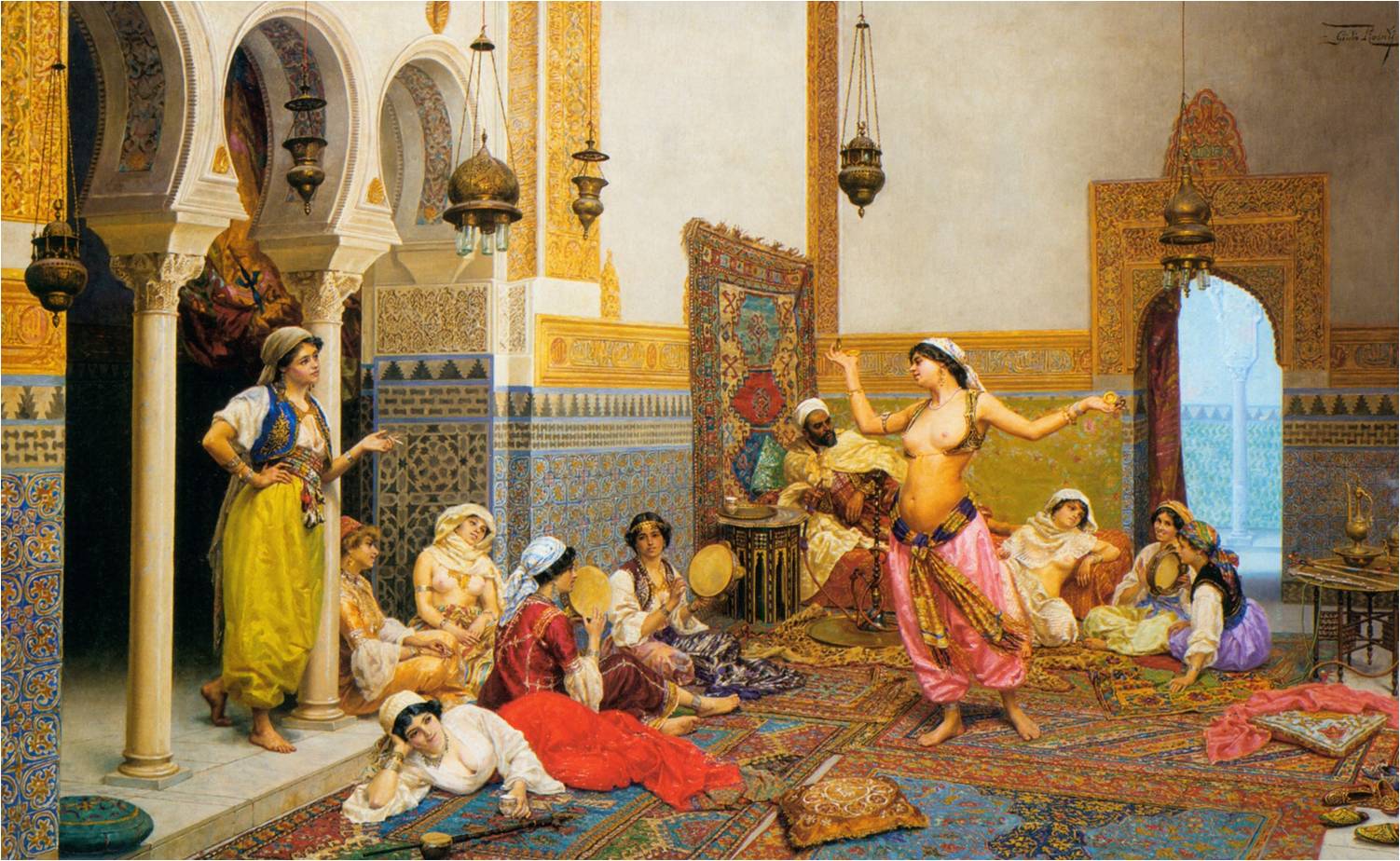In the harem, women did not go naked. Nor did they wear flimsy, see-through harem pants.
Despite the panting Western imagination, so memorably examined by Edward Said in his 1978 book “Orientalism,” the classic Western fantasy of the harem never existed in fact, reports Lisa Nielson, the Anisfield-Wolf scholar at Case Western Reserve University.
“The harem is the symbol of the Orient – women lounging, indolent, beautiful, passive objects,” Nielson said during an October lecture on “Improvisation and Transgression: Musicians of the Harem,” given for the Baker-Nord Center on Humanities at Case.
In the artistic imagination of Western painters, harems contained reliable tropes: feathers, the hookah, an exotic despot, unclothed women and often musicians. “Clothes are a sign of status, and playing musical instruments and smoking while naked is actually not that comfortable,” joked Nielson, who teaches a SAGES course on the women’s quarters in history and in the Western imagination.
Perhaps the Western nonsense reached its nadir, she said, in the 1965 Elvis Presley vehicle, “Harum Scarum.” This movie, in which Presley plays an American singer enlisted by sinister forces in the assassination of an Arab king whose daughter he loves, is so dreadful that Nielson said she “bought it for a dollar and I paid too much.”
Nielson stressed that there is much to discover about the historical harem, which is only one specific form of gender segregation among many. Such segregation is found in the Bible, ancient Greece, China, Korea, India, and Europe. The word “harem” as a reference to the women’s quarters is specific to Ottoman Empire; other cultures had different terms and rules for these spaces. Moreover, Nielson noted, “the women of the women’s quarters were highly educated, skilled, and, often quite ruthless.”
The role of the musician was one of entertainer and intermediary in the harem, reports Nielson, who earned her doctorate in ancient musicology and gender studies. As in the West, there was a struggle in Islam over whether music stirs indecency or represents a pathway to the divine. “In the West, angels play music and intercede for us,” Nielson observed. “Music itself is the intermediary. Among Sufis, music was a way of getting closer to God. Therefore, the musician, who was frequently a highly skilled member of the women’s quarters, had access to the ruler’s body and soul.”
We are very far from harem pants, indeed.


